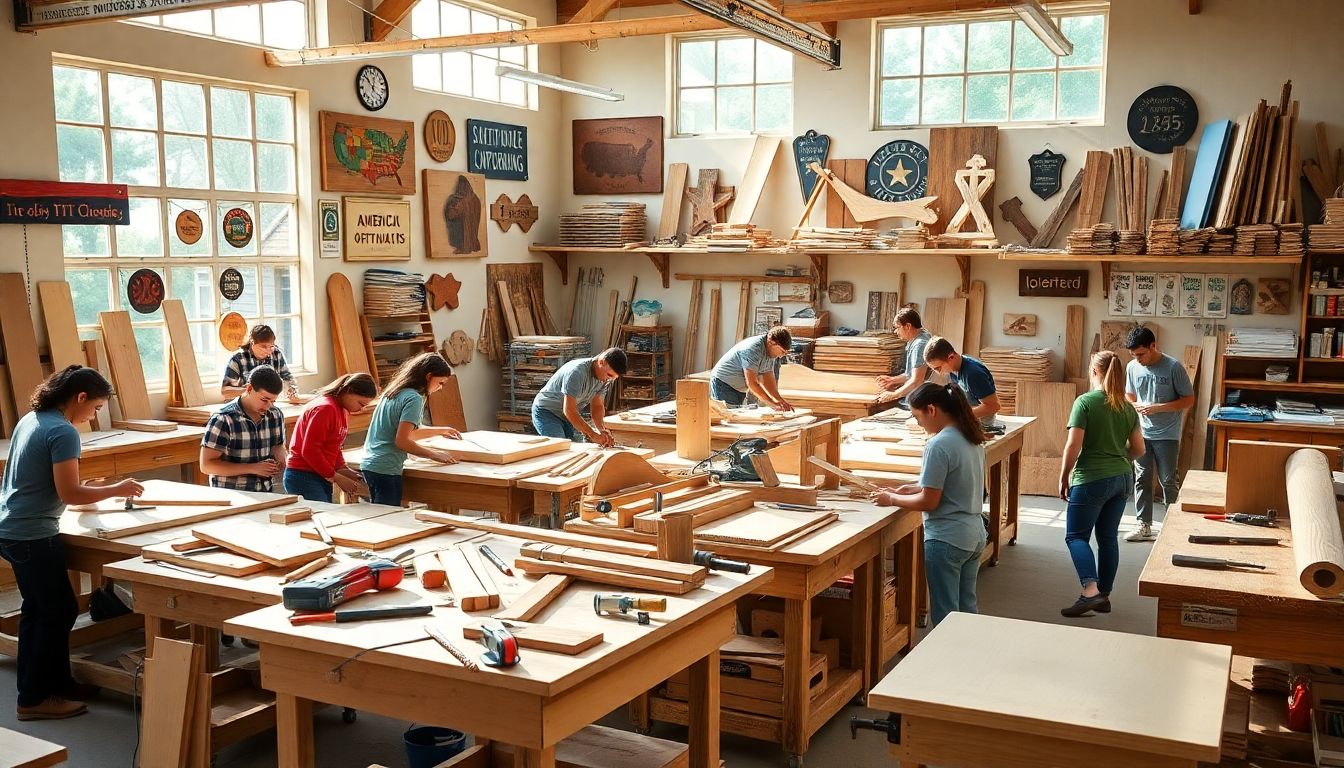Introduction
Woodwork is becoming a national avocation and vocation. Everyone wishes to learn working with wood. Not only it is fun, but it also will soothe your nerves and make you adept. And you’ve never found it easier to find woodworking lessons. Whether a woodworking novice or you wish to advance it to the next stage, there exists a lesson that suits you.
Why Study Woodworking in the United States?
Increasing Demand and Market Trends
Woodworking is more in demand than ever before with new woodworkers daily. Experts in the industry state that they see a phenomenal increase in individuals enrolling in classes. Americans want to make something with their own hands more than ever before, surveys indicate. Not only do classes offer the creating, but also safety and camaraderie. Some take classes to make new friends and to boast about projects.
Benefits of Official Woodworking Training
It’s safe being at school while you’re sanding, cutting, and building with tools. You’re being taught proper cutting, sanding, and building with wood. Expert, step-by-step guidance is given. You even get to display your work and talk with fellow woodworkers. Advantages such as these make a pastime authentic expertise.
Woodwork Courses Available Across the United States
College and Vocational School classes
They are inexpensive and can award certificates. They offer beginner and advanced degrees on the same level. San Francisco State University or Boston’s North Bennett Street School are some examples. They offer individual or career projects to the students.
Private Workshops and Studios
Most woodworkers establish their own schools for learning in small classes. The classes offer intensive learning in selected skills. Philadelphia Furniture Workshop, for example, is a school teaching furniture making. Small classes ensure individualized instruction and faster learning.
Online and Virtual Woodworking Courses
E-learning websites double each year. Udemy, MasterClass, and local geographical websites now have courses you can learn at home. Excellent if you like learning in your own time, ideal for working life on the move. Handy if you cannot sit at school or travel too far.
Youth and School-Based Programs
Teenagers and children can begin at a young age. Schools, charities, and YMCA also provide after-school courses. They provide teenagers with basic woodworking and offer them an artistic avenue. It is a great skill-learn and hobby-learn platform.
How to Pick the Ideal Woodworking Course in the U.S.?
Remember your skills and goals
Are you new or are you prepared to work on tough projects? Do you wish to create furniture, toys, or paintings? The appropriate class relies on how experienced you are and what you wish to create. Choose classes that match your objectives for better outcomes.
Location and Accessibility
Verify the courses in your area with the use of the internet directories or guides. Take into account the amount of traveling you will be doing. It is more convenient to remain with a locally positioned course. If you prefer to do online courses, ask if they provide live feedback or forums.
Cost and Duration
Pricing is tiered. Private schools are more expensive, and community classes are less expensive. More in-depth classes cost more money but cover more in instruction. Short workshops acquire instant skills, and semester courses acquire good knowledge.
Instructor Credentials and Class Reviews
Always ensure the professor is hands-on in the field. What your classmates say about your professor will tell you a lot. A great rated instructor can make or break how much you learn and how much you enjoy your course.
Best Providers and Sources for Woodworking Class in America
Legendary Institutions and Schools
There are schools that are simply higher in quality. Boston’s North Bennett Street School, and The New England School of Architectural Woodworking, are two of them. Both are older and send out wonderfully capable craftsmen.
Recommended Workshops and Studios
Specialty stores like The Philadelphia Furniture Workshop or The Crucible in Oakland handle specialty classes. They are useful for learning about something or making personal projects, all in an inspirational environment.
Online Course Sites
Online platforms like MasterClass have classes instructed by famous woodworkers like Bob Clagett. Skillshare and Instructables go from a beginner to an expert. These platforms are a cheap and easy way of learning.
Town Programs within the Community
Most home improvement stores like Waymart have low or no-fee DIY classes. YMCAs or Town recreation centers even offer woodshop classes. These are convenient ways of getting enlightened for anyone no matter their age or economic status.
Tips on How to Succeed in Woodworking Classes
Clean Your Workspace
Put on eye goggles and earplugs, and protective gear. Since you are a studio student, determine what is required of you to bring along. Design a special corner in the house which is ventilated and well lit. With an appropriate working place, you will be able to focus and avoid accidents.
Practice Safety and Technique
The right equipment and good technique must always be worn. Practice must be done when measuring, marking, and cutting pieces accurately. Smooth technique always beats running around with any power tool, especially.
Work Actively and Network
Get inquisitive and finish tasks. Listen carefully to the instructors and make certain to jot down any ideas or methods shared with the class. Talk to other students as they will create fresh possibilities or likely workshop collaborators.
Follow Up with Independent Projects
Practice new skills to create your own projects. Begin small and build with time. Take advice from online videos and forums for second opinions, and pamper yourself with success.
Conclusion
Choosing the best woodworking class brings you into the realm of knowledge and imagination. Learning under supervision, you are faster, you are protected, and you’re among equals. Home or online, there’s one that’s yours. Start now and set ahead, bringing your woodworking dreams to life.
